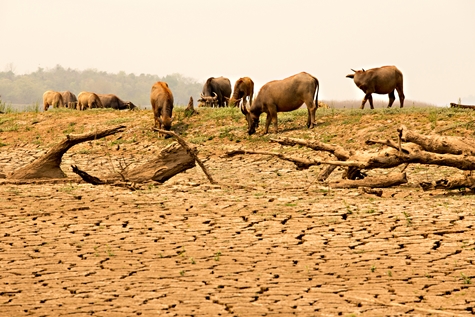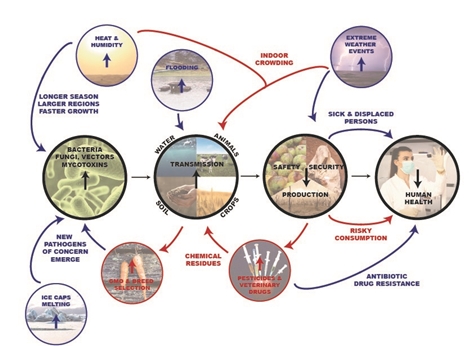Climate Change Plans will Prevent Food Safety Issues
By Suzanne Osborne
The Food and Agriculture Organization of the United Nations (FAO) has, for years, warned that climate change is going to have dramatic effects on food businesses going forward. A record drought in Texas in 2011 cost the agricultural sector $7.6 billion and similar drought conditions have more recently led to the complete relocation of the cattle industry in Australia. What’s more, according to a 2016 Global Resource Challenge Report, 66% of executives in the food and beverage, hospitality services, healthcare services, and consumer goods industries report they have already faced resource challenges due to climate change. We can no longer ignore the fact that global climate change is a reality that threatens food safety and food value chains.

The Impact of Climate Change on Food Safety
According to the World Health Organization, local changes in weather will directly alter where, when, and low long food pathogens can survive. Extreme weather and flooding in some regions will increase opportunities for disease transmission between animals, plants, soil, and water. Flooding can also introduce chemical contamination.
Industry responses to climate change may also indirectly increase food safety risks. For example, food animals may increasingly be crowded indoors in response to the weather, which increases opportunities for disease transmission. Greater use of pesticides and veterinary drugs – to mitigate product loss –increases the risk of chemical residues on food and encourages antibiotic resistance.
Steps the Food Industry Can Take
The FAO says it’s imperative that all individual businesses incorporate climate change into their risk management plans and the organization has made several recommendations to mitigate the impending challenges to food safety:
• Farmers should begin introducing climate-tolerant plant and animal varieties now to bring producers and processors up to speed before rising temperatures reduce production levels. Immediate options include finding varieties used by neighbouring countries who currently experience warmer climates.
• Biotechnology, manufacturing, and regulatory bodies involved in pesticide use should review and modify application recommendations to reflect how pesticide biochemistry (efficacy, dosage, degradation) changes with weather (elevated temperature, CO2, humidity).
• A technology opportunity exists to develop software or apps that can directly link weather information to pesticide use recommendations for on-farm decision-making.
• The food industry itself should be taking steps to strengthen local, international, and interdisciplinary communications. Communication will allow industry to track, and respond to, new pest and foodborne disease outbreaks. The development of software or apps that anonymously connect producers, processors, health officials, and even consumers would aid in facilitating open, interdisciplinary communication – reporting on pests, pathogens, and disease outbreaks in real time.
It is now critical for businesses across the food industry to manage climate-related impacts along their value chain.

About the Author
Dr. Suzanne Osborne‘s expertise is in the field of host-pathogen interactions and foodborne bacteria. She obtained her doctoral degree at McMaster University and worked as a Research Fellow at the Hospital for Sick Children (Toronto). She has received numerous awards for her research. Suzanne currently does freelance science writing and grant writing.




